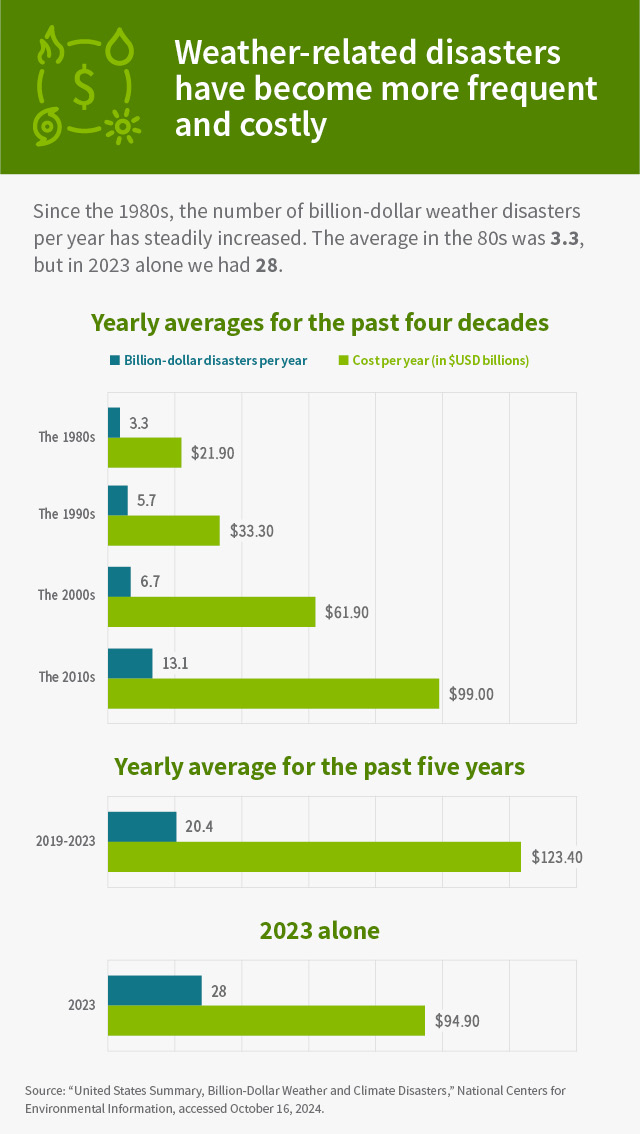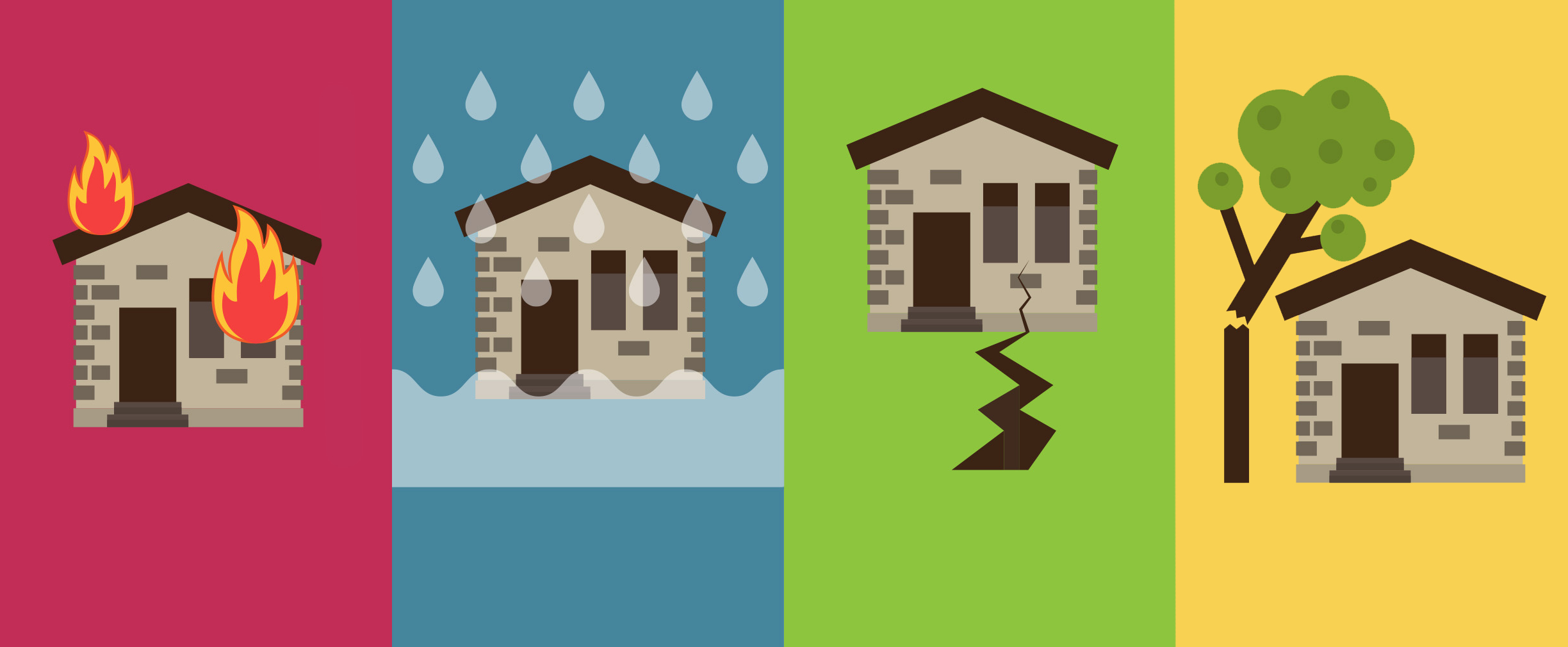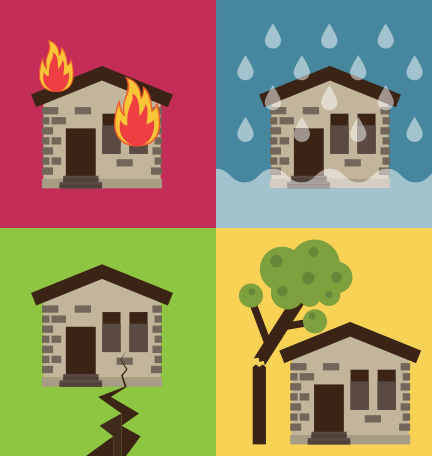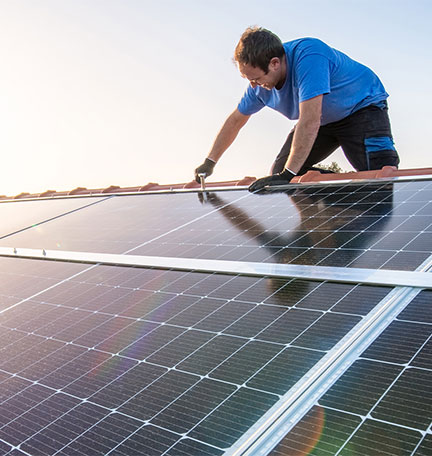Learn ways to protect your home, your finances and your loved ones when disasters strike.
The warmest decade recorded on the planet took place between 2014 and 2023, according to the U.S. Environmental Protection Agency. With rising temperatures associated with extreme weather, it’s little surprise the United States is seeing more floods, wildfires, heat waves and hurricanes. On top of that, areas that historically didn’t experience severe weather are now subject to storm-related threats.
That means it’s wise for homeowners everywhere to know how to respond to a variety of potential emergencies. Regardless of where you live, here’s how to prepare.
What to do before an emergency
Create an emergency preparedness plan. The plan should include a meet-up place for household members to regroup if you become separated. You’ll also want to:
- Review your homeowners insurance policy. Make sure your property and possessions are covered for natural disasters and emergencies.
- Build an emergency fund. This can help pay for expenses your home insurance doesn’t cover.
- Make copies of vital documents. Include insurance policies, property records, medical information, birth certificates, passports and citizenship papers. Store the originals in a fireproof lockbox, a safe deposit box or on a secure cloud file storage service.
- Monitor home safety tools. Regularly check to make sure the carbon monoxide and smoke detectors in your home work. Keep more than one fire extinguisher handy, including one in your kitchen.

What to do in a pending emergency
Don’t panic. Refer to your emergency preparedness plan and make sure everyone remembers where to meet up in case you need to evacuate. Then you should:
- Find (or create) your emergency preparedness kit. This should include supplies to help you if the power goes out and you can’t evacuate your home. The kit should include enough nonperishable food and water to last at least three days, as well as first aid supplies, a flashlight and a sleeping bag or warm blanket for every person in your home.
- Charge your electronic devices. If severe weather is forecast, make sure your phone and any other essential devices are fully charged.
- Monitor weather alerts. Stay informed about potential weather emergencies and have a response plan for your family, pets and home. Based on the circumstances, be ready to evacuate if necessary or ride it out inside your home.
What to do in an emergency evacuation
The first thing you’ll want to do is secure your home. Close, lock and shutter windows and doors. After that, you should:
- Unplug electrical devices. Disconnect small appliances and devices other than your refrigerator and freezer.
- Gather emergency supplies. Bring your emergency preparedness kit and vital documents.
- Leave a note. Jot down the date and time you left your home, your destination and contact information.
- Check the traffic. Be ready for road congestion and follow the evacuation routes recommended by local officials.
- Stay alert. During your evacuation, be aware of risks such as flash flooding, washed-out bridges and downed power lines.
No one wants to think about catastrophes. But having a thorough preparation plan can help you respond quickly and effectively.
Start today
- Read more: Creating a family disaster preparedness plan.
- Learn more: Take our course on building emergency savings to cover a potential disaster.
- Take action: Explore the resources in Regions’ Disaster Resource Center.










